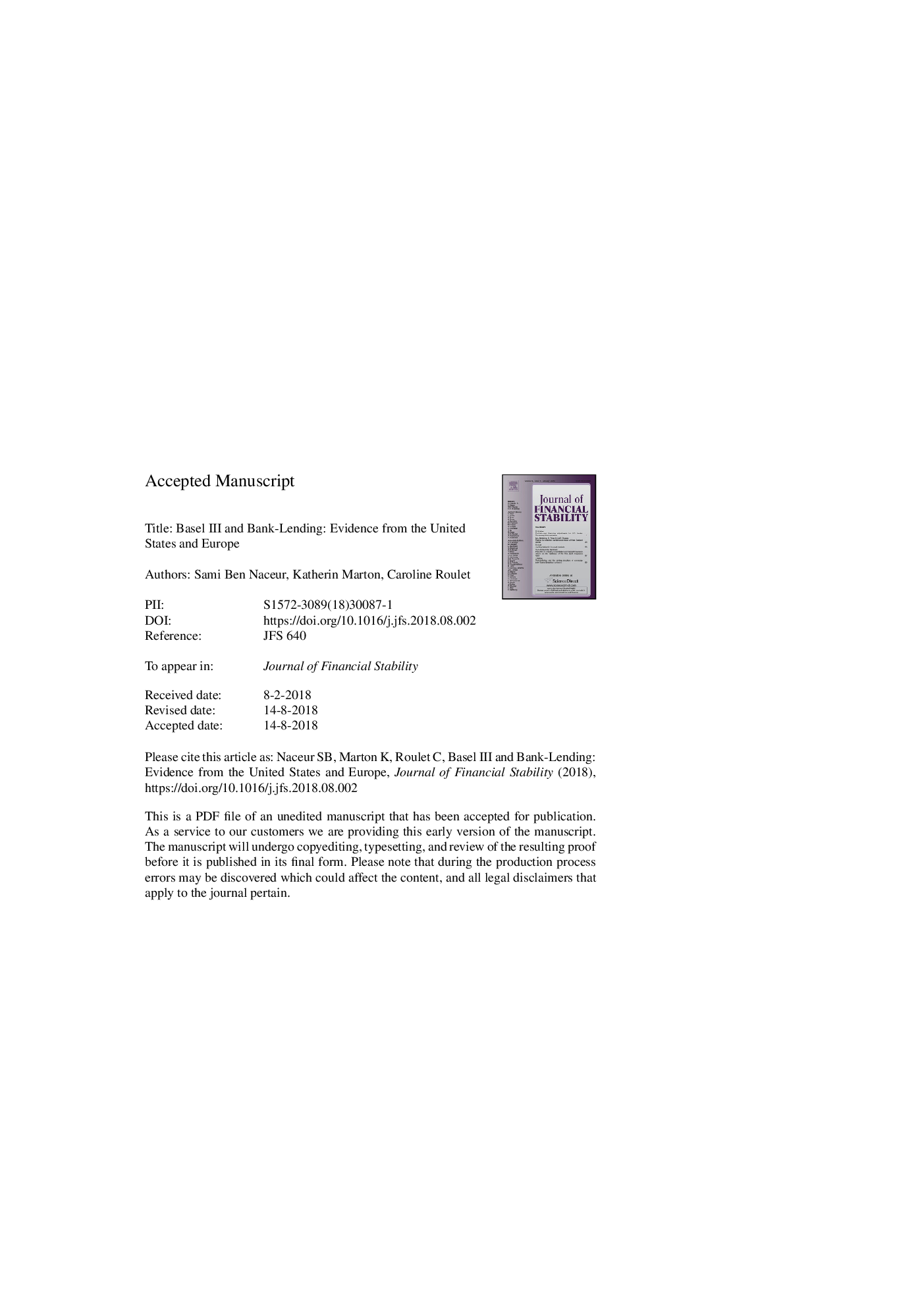| Article ID | Journal | Published Year | Pages | File Type |
|---|---|---|---|---|
| 11023276 | Journal of Financial Stability | 2018 | 71 Pages |
Abstract
Using data on bank holding companies in the United States and Europe, this paper analyses the impact of capital and liquidity on bank-lending-growth following the 2008 financial crisis, and the new measures inspired by the Basel III regulatory framework. We find that U.S. banks reinforce their risk absorption capacities when expanding their credit activities. Capital ratios have significant, negative impacts on bank-retail-and-other-lending-growth for large European banks in the context of deleveraging and the “credit crunch” in Europe over the post-2008 financial crisis period. Additionally, liquidity indicators have positive but perverse effects on bank-lending-growth, which supports the need to consider heterogeneous banks' characteristics and behaviors when implementing new regulatory policies.
Related Topics
Social Sciences and Humanities
Economics, Econometrics and Finance
Economics, Econometrics and Finance (General)
Authors
S. Ben Naceur, Katherin Marton, Caroline Roulet,
